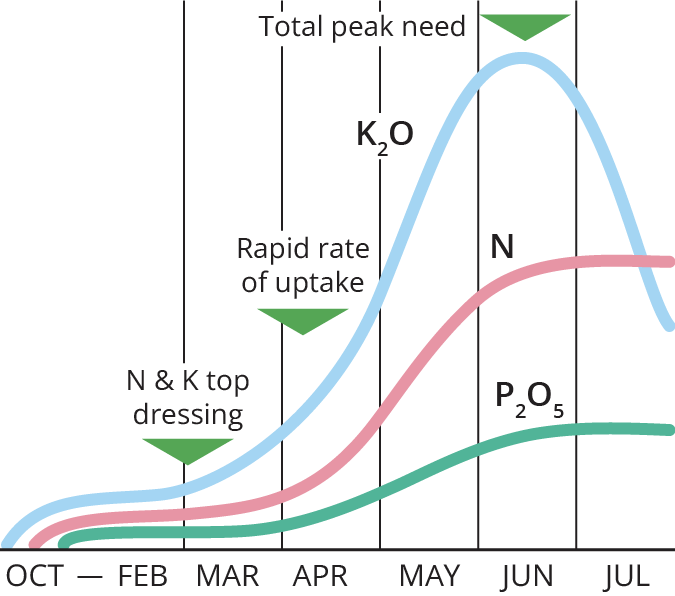Spring Potash Applications
February 2023
For those who chose to hold off applying potash in the autumn, the recent dry weather and good field conditions may prove an opportunity to catch up on any missed applications.
Autumn dressings of phosphate and potash enable these nutrients to be worked into seedbeds to help distribute the nutrients through the cultivated layer, so they are available to the establishing crop (if autumn drilled) and available through the spring when the uptake is greatest. This does not mean however, that if not applied in the autumn, the value of these inputs is reduced.
Only modest supplies of nutrient are needed for establishment and overwintering. Uptake then rises during vegetative growth in spring and is particularly large for potash with levels peaking in the plant around flowering and then declining as older leaves are lost and as the plant matures towards harvest. Peak uptake of potash by high yielding cereals is around 250 kg/ha; for oilseed rape crops it is 250-300 kg/ha. Field trials have indicated that as a generalisation potash supply will be adequate from soils at index 2. Soils at the lower end of this index contain 120 mg/l of available K which is equivalent to 145 kg/ha of K2O in the top 10 cm. This obviously falls well short of the total needed by high yielding crops and has to be supplemented by potash from greater depth and on heavier soils also from release of non-exchangeable soil K. On lighter, shallower soils it may not be practical to raise soil K to this target level and soil supplies may thus not be adequate to fulfil the total need. The lower the level of soil K, the greater is the need for fertiliser supplementation. Potash top dressing has an obvious place in such circumstances.
With a big increase in demand seen by all nutrients in the spring, applications of all nutrients, including phosphate and sulphur could also be beneficial where there is a demand. Although phosphate requirements are relatively modest in comparison to nitrogen and potash, its low soil mobility may improve the value of its application, particularly on low index soils. In contrast, the high mobility of sulphur in the soil, combined with the well documented reduction in atmospheric sulphur deposition, has led to most soils benefiting from spring applications.
There are a mulitude of product options for these important nutrients, however, outside of NS or NKS products, polyhalite provides an important source of sulphur, along with potash, magnesium and calcium.


